bestfalldetection.watch -
helping you make the best choice.
Fall Detection Watches Compared
Table of Contents
Choosing the Best Fall Detection Watch
It’s rare when comparing products to have one come out so far ahead. Xbox vs PlayStation, Apple vs Samsung. Brands are in a constant battle to be the best. One brings out a new feature, and the other responds, matching or bettering the offer.
Not so in the fall detection watch world. The Kanega watch is so far ahead of the competition, that it’s Kanega first, daylight second, and the others. Well. They are missing so much desirable functionality that we couldn’t give the best of the rest even 3 stars.
The Kanega Watch has the smartest fall detection engine that learns when a fall is not a fall, never needs to be taken off to charge, is simple to use, works out of the box, and needs no other devices to operate. The Kanega watch is a purpose-dedicated watch, with fall detection built into it. It doesn’t require a connection to a secondary device such as a phone, or pendant.
All the others provided some level of fall detection but struggled with being complex to use, not having native fall detection, and in all ways just not being as complete a solution for someone looking for a fall detection solution.
Kanega Watch
Kanega Watch
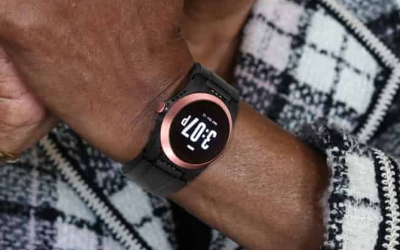
-
 Highly Accurate Fall Detection
Highly Accurate Fall Detection -
 24/7 Monitoring service/Emergency support included?
24/7 Monitoring service/Emergency support included? -
 Wrist-based fall detection?
Wrist-based fall detection? -
 Voice and button activated alert options?
Voice and button activated alert options? -
 Can handle non-911 emergencies?
Can handle non-911 emergencies? -
 Can wear in the shower?
Can wear in the shower? -
 Can wear 24/7?
Can wear 24/7? -
 GPS tracking?
GPS tracking? -
 Wi-Fi and cellular connectivity?
Wi-Fi and cellular connectivity? -
 Battery Life (More than 1 day)?
Battery Life (More than 1 day)? -
 Works out of the box?
Works out of the box? -
 Simple to use?
Simple to use? -
 Other features?
Other features? -
 Price lock guaranteed?
Price lock guaranteed? -
 Partial refund if returned/cancelled?
Partial refund if returned/cancelled?
Highly Accurate Fall Detection
24/7 Monitoring service/Emergency support included?
Wrist-based fall detection?
Voice and button activated alert options?
Can handle non-911 emergencies?
Can wear in the shower?
Can wear 24/7?
GPS tracking?
Wi-Fi and cellular connectivity?
Battery Life (More than 1 day)?
Works out of the box?
Simple to use?
Other features?
Price lock guaranteed?
Partial refund if returned/cancelled?
Pricing
$79.95 monthly subscription
MGMove by Medical Guardian
MGMove by Medical Guardian
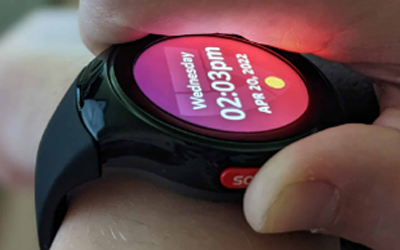
-
 Highly Accurate Fall Detection
Highly Accurate Fall Detection -
 24/7 Monitoring service/Emergency support included?
24/7 Monitoring service/Emergency support included? -
 Wrist-based fall detection?
Wrist-based fall detection? -
 Voice and button activated alert options?
Voice and button activated alert options? -
 Can handle non-911 emergencies?
Can handle non-911 emergencies? -
 Can wear in the shower?
Can wear in the shower? -
 Can wear 24/7?
Can wear 24/7? -
 GPS tracking?
GPS tracking? -
 Wi-Fi and cellular connectivity?
Wi-Fi and cellular connectivity? -
 Battery Life (More than 1 day)?
Battery Life (More than 1 day)? -
 Works out of the box?
Works out of the box? -
 Simple to use?
Simple to use? -
 Other features?
Other features? -
 Price lock guaranteed?
Price lock guaranteed? -
 Partial refund if returned/cancelled?
Partial refund if returned/cancelled?
Highly Accurate Fall Detection
24/7 Monitoring service/Emergency support included?
Wrist-based fall detection?
Voice and button activated alert options?
Can handle non-911 emergencies?
Can wear in the shower?
Can wear 24/7?
GPS tracking?
Wi-Fi and cellular connectivity?
Battery Life (More than 1 day)?
Works out of the box?
Simple to use?
Other features?
Price lock guaranteed?
Partial refund if returned/cancelled?
Pricing
$39.95 per month Subscription
WellBe Medical Alert Plus by HandsFree Health
WellBe Medical Alert Plus by HandsFree Health
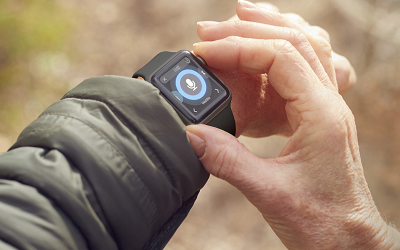
-
 Highly Accurate Fall Detection
Highly Accurate Fall Detection -
 24/7 Monitoring service/Emergency support included?
24/7 Monitoring service/Emergency support included? -
 Wrist-based fall detection?
Wrist-based fall detection? -
 Voice and button activated alert options?
Voice and button activated alert options? -
 Can handle non-911 emergencies?
Can handle non-911 emergencies? -
 Can wear in the shower?
Can wear in the shower? -
 Can wear 24/7?
Can wear 24/7? -
 GPS tracking?
GPS tracking? -
 Wi-Fi and cellular connectivity?
Wi-Fi and cellular connectivity? -
 Battery Life (More than 1 day)?
Battery Life (More than 1 day)? -
 Works out of the box?
Works out of the box? -
 Simple to use?
Simple to use? -
 Other features?
Other features? -
 Price lock guaranteed?
Price lock guaranteed? -
 Partial refund if returned/cancelled?
Partial refund if returned/cancelled?
Highly Accurate Fall Detection
24/7 Monitoring service/Emergency support included?
Wrist-based fall detection?
Voice and button activated alert options?
Can handle non-911 emergencies?
Can wear in the shower?
Can wear 24/7?
GPS tracking?
Wi-Fi and cellular connectivity?
Battery Life (More than 1 day)?
Works out of the box?
Simple to use?
Other features?
Price lock guaranteed?
Partial refund if returned/cancelled?
Pricing
$44.95 monthly subscription
Lively
Lively
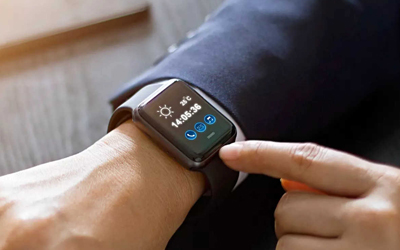
-
 Highly Accurate Fall Detection
Highly Accurate Fall Detection -
 24/7 Monitoring service/Emergency support included?
24/7 Monitoring service/Emergency support included? -
 Wrist-based fall detection?
Wrist-based fall detection? -
 Voice and button activated alert options?
Voice and button activated alert options? -
 Can handle non-911 emergencies?
Can handle non-911 emergencies? -
 Can wear in the shower?
Can wear in the shower? -
 Can wear 24/7?
Can wear 24/7? -
 GPS tracking?
GPS tracking? -
 Wi-Fi and cellular connectivity?
Wi-Fi and cellular connectivity? -
 Battery Life (More than 1 day)?
Battery Life (More than 1 day)? -
 Works out of the box?
Works out of the box? -
 Simple to use?
Simple to use? -
 Other features?
Other features? -
 Price lock guaranteed?
Price lock guaranteed? -
 Partial refund if returned/cancelled?
Partial refund if returned/cancelled?
Highly Accurate Fall Detection
24/7 Monitoring service/Emergency support included?
Wrist-based fall detection?
Voice and button activated alert options?
Can handle non-911 emergencies?
Can wear in the shower?
Can wear 24/7?
GPS tracking?
Wi-Fi and cellular connectivity?
Battery Life (More than 1 day)?
Works out of the box?
Simple to use?
Other features?
Price lock guaranteed?
Partial refund if returned/cancelled?
Pricing
$34.99 monthly subscription
Apple Watch
Apple Watch
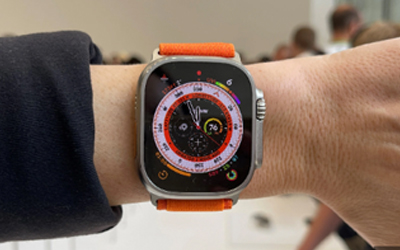
-
 Highly Accurate Fall Detection
Highly Accurate Fall Detection -
 24/7 Monitoring service/Emergency support included?
24/7 Monitoring service/Emergency support included? -
 Wrist-based fall detection?
Wrist-based fall detection? -
 Voice and button activated alert options?
Voice and button activated alert options? -
 Can handle non-911 emergencies?
Can handle non-911 emergencies? -
 Can wear in the shower?
Can wear in the shower? -
 Can wear 24/7?
Can wear 24/7? -
 GPS tracking?
GPS tracking? -
 Wi-Fi and cellular connectivity?
Wi-Fi and cellular connectivity? -
 Battery Life (More than 1 day)?
Battery Life (More than 1 day)? -
 Works out of the box?
Works out of the box? -
 Simple to use?
Simple to use? -
 Other features?
Other features? -
 Price lock guaranteed?
Price lock guaranteed? -
 Partial refund if returned/cancelled?
Partial refund if returned/cancelled?
Highly Accurate Fall Detection
24/7 Monitoring service/Emergency support included?
Wrist-based fall detection?
Voice and button activated alert options?
Can handle non-911 emergencies?
Can wear in the shower?
Can wear 24/7?
GPS tracking?
Wi-Fi and cellular connectivity?
Battery Life (More than 1 day)?
Works out of the box?
Simple to use?
Other features?
Price lock guaranteed?
Partial refund if returned/cancelled?
Pricing
Monthly cell plan additional
Samsung Watch
Samsung Watch
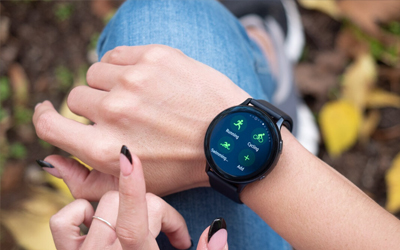
-
 Highly Accurate Fall Detection
Highly Accurate Fall Detection -
 24/7 Monitoring service/Emergency support included?
24/7 Monitoring service/Emergency support included? -
 Wrist-based fall detection?
Wrist-based fall detection? -
 Voice and button activated alert options?
Voice and button activated alert options? -
 Can handle non-911 emergencies?
Can handle non-911 emergencies? -
 Can wear in the shower?
Can wear in the shower? -
 Can wear 24/7?
Can wear 24/7? -
 GPS tracking?
GPS tracking? -
 Wi-Fi and cellular connectivity?
Wi-Fi and cellular connectivity? -
 Battery Life (More than 1 day)?
Battery Life (More than 1 day)? -
 Works out of the box?
Works out of the box? -
 Simple to use?
Simple to use? -
 Other features?
Other features? -
 Price lock guaranteed?
Price lock guaranteed? -
 Partial refund if returned/cancelled?
Partial refund if returned/cancelled?
Highly Accurate Fall Detection
24/7 Monitoring service/Emergency support included?
Wrist-based fall detection?
Voice and button activated alert options?
Can handle non-911 emergencies?
Can wear in the shower?
Can wear 24/7?
GPS tracking?
Wi-Fi and cellular connectivity?
Battery Life (More than 1 day)?
Works out of the box?
Simple to use?
Other features?
Price lock guaranteed?
Partial refund if returned/cancelled?
Pricing
Monthly cell plan additional
Conclusion - so which Fall Detection Watch to Buy?
In almost all cases, the best option is the Kanega Watch. It’s the only true, made-for-purpose fall detection watch. Other devices have wrist-wearing capability or can be set up to provide some level of fall detection service. Still, they let the user down with unnecessary complexity, poor charging options, or just low cleverness when it comes to fall detection.
The Kanega Watch is the clear winner.
Yes, fall detection watches are waterproof. They are designed to be worn in the shower or while swimming, and can be submerged up to a certain depth for a certain amount of time. Most fall detection watches are rated IPX7, meaning they can be submerged in up to 1 meter of water for up to 30 minutes.
Yes, there are health risks associated with wearing a fall detection watch. The watch may not detect all types of falls, such as those from standing or falling sideways. Additionally, the watch could cause skin irritation due to the material it is made from or due to the tightness of the watch around the wrist.
Yes, a fall detection watch can be used as a regular watch. Most fall detection watches have all the features of a regular watch, such as the ability to tell time, set alarms, and track steps. In addition, many fall detection watches also have advanced features, such as heart rate monitoring and GPS tracking.
Yes, a fall detection watch can call 911. It is equipped with a cellular modem that can automatically place a call to emergency services if the user falls or remains still for a certain period of time. The watch also has a button that the user can press to manually call 911 if they are in need of emergency assistance.
No, a fall detection watch cannot detect all falls. The watch uses an accelerometer to detect sudden changes in position that may indicate a fall has occurred, but it cannot always detect falls that occur slowly or that do not involve a sudden change in movement. Additionally, falls that occur in water or in which the watch is dislodged from the wrist may not be detected.
Yes, a fall detection watch can monitor your heart rate. The watch typically has a built-in sensor that monitors your heart rate throughout the day and can track changes in your heart rate during physical activity. It also has the ability to detect falls and send an alert in case of an emergency.
Yes, you can take your fall detection watch off. However, it is important to note that the watch may not be able to detect a fall if it is not being worn. Additionally, the watch may need to be reset if it is taken off for an extended period of time.
Yes, you can wear a fall detection watch on either wrist. Most fall detection watches are designed to be worn on either the left or right wrist, allowing you to choose whichever is most comfortable for you. Additionally, many fall detection watches are adjustable, so you can customize the fit to your wrist size and shape.
Yes, you can wear your fall detection watch to bed. This type of watch is designed to be worn 24/7, so you can feel comfortable wearing it all day and night. Some fall detection watches are even equipped with sleep tracking features, allowing you to monitor your sleep and make sure you’re getting enough restful sleep.
Yes, fall detection watches have GPS capabilities. This allows the watch to track the wearer’s location and send alerts if they have fallen in an unfamiliar area. The watch can also be used to send an emergency SOS message with the wearer’s exact location if they are unable to call for help.
Yes, fall detection watches typically have monthly fees associated with them. The fees typically cover the cost of the cellular service associated with the watch, as well as any additional features that may be included in the watch such as medical alert systems. The exact amount of the monthly fees will vary depending on the watch and features chosen.
No, you do not need a smartphone to use a fall detection watch. Many fall detection watches have built-in cellular technology that allows them to send an emergency alert directly to a designated contact or to emergency services. However, some fall detection watches do require a smartphone to work, so it is important to check the product specifications before purchasing.
Yes, you need WiFi for your fall detection watch in order to access features such as automatic alerts to your contacts and access to medical help. Fall detection watches are designed to monitor for falls and alert contacts if needed, which requires an internet connection. Additionally, some fall detection watches also allow you to track activity and health metrics, which also requires WiFi.
Fall detection watches are generally quite accurate, using sensors to detect when a person has fallen and activating an alarm. The accuracy of the watch depends on the type of sensor used and the quality of the device, as some watches may be more sensitive than others. Additionally, the watch may need to be calibrated to the individual user in order to ensure maximum accuracy.
To maintain your fall detection watch, make sure to regularly clean it with a soft, dry cloth. Additionally, avoid exposing it to water or extreme temperatures. You should also keep the battery charged and replace it as needed.
To set up your fall detection watch, start by downloading the associated app on your smartphone and following the instructions for pairing the watch with your device. Once the watch is connected, you can customize the settings to your preferences, such as enabling fall detection and selecting the type of alerts you’d like to receive. Finally, ensure that your watch is securely fastened to your wrist for optimal accuracy.
A fall detection watch uses sensors and algorithms to detect when a person has fallen. These sensors are usually located in the watch and measure motion or changes in pressure. If an abnormal fall is detected, the watch is programmed to trigger an alert to a contact or emergency services.
The battery in a fall detection watch typically lasts for up to 1 year. However, the exact battery life will vary based on the specific watch model and the frequency of use. It is important to check the manufacturer’s instructions to determine the battery life of a specific watch.
A fall detection watch typically costs between $100 and $200. Many factors, such as the brand and features, can affect the price of the watch. Additionally, if you purchase a fall detection watch with a subscription, you may be able to get a discounted rate.
Yes, your data is safe with a fall detection watch. The watch is designed to be worn all day and night, and it uses secure encryption technology to protect your data. Furthermore, the watch is programmed to notify emergency contacts in the event of a fall, so you can rest assured that your data is secure.
A fall detection watch is a wearable device that can detect when a person falls and send an alert to emergency contacts or medical personnel. These watches use sensors to detect sudden changes in motion and can differentiate between a fall and other movements. Fall detection watches are particularly useful for elderly individuals or those with medical conditions that put them at risk for falls.
Fall detection watches typically have a range of other features, such as activity tracking, heart rate monitoring, and GPS. Many also have an SOS button for emergency situations, which can alert pre-programmed contacts with your location. Some even have additional health monitoring features, such as blood pressure monitoring and sleep tracking.
If your fall detection watch alerts falsely, you should first make sure that you are not injured and then contact the manufacturer of the watch. You should also document any false alarms that you experience in case the manufacturer needs more information to troubleshoot the issue. Finally, you should contact your doctor if you are concerned about your safety or the accuracy of the watch.
A fall detection watch should be used by anyone at risk of falling, such as elderly people or those with a medical condition that increases their risk of falling. These watches can detect a fall and send an alert to a designated contact, such as a family member or healthcare provider, so they can respond quickly if necessary. Fall detection watches also provide peace of mind for the wearer and their family, knowing that help is available if an accident occurs.
Yes, the fall detection watch will alert your family if you fall. It is designed to detect falls and will send an alert to your family members with your GPS location. This allows them to quickly come to your aid if needed.
